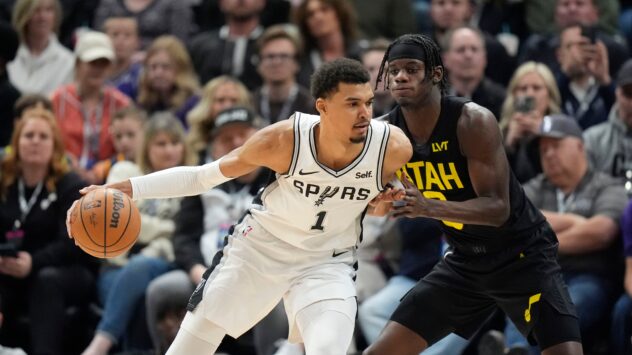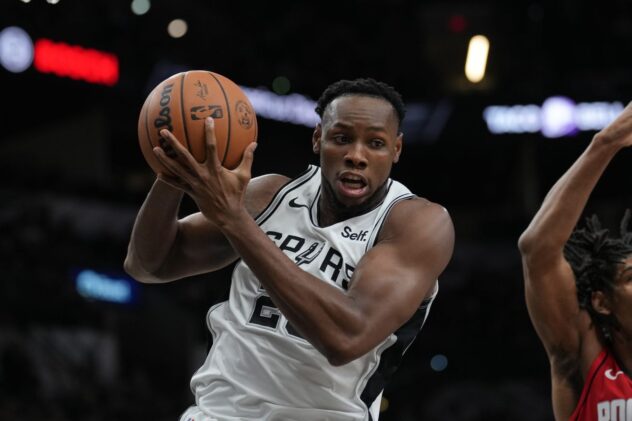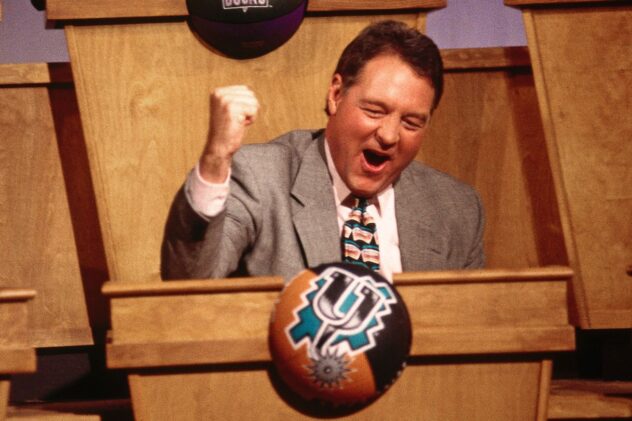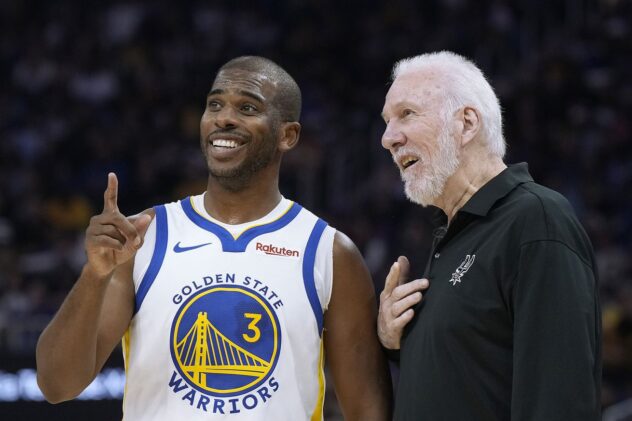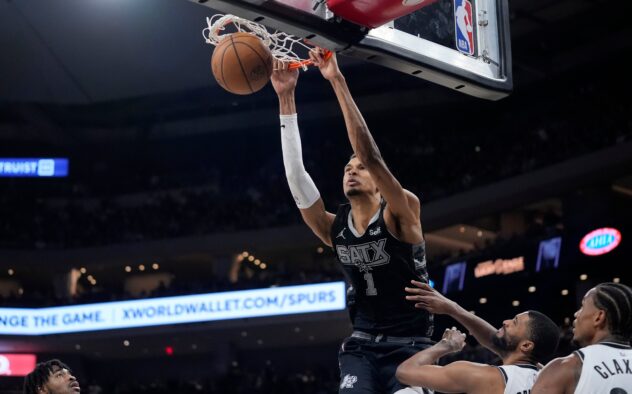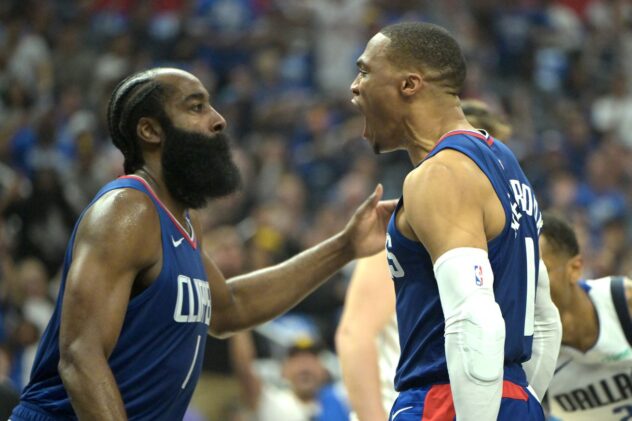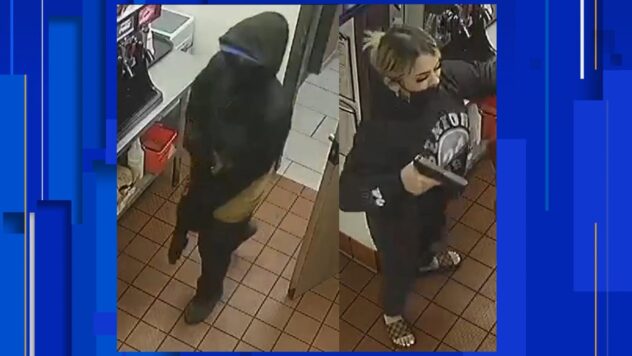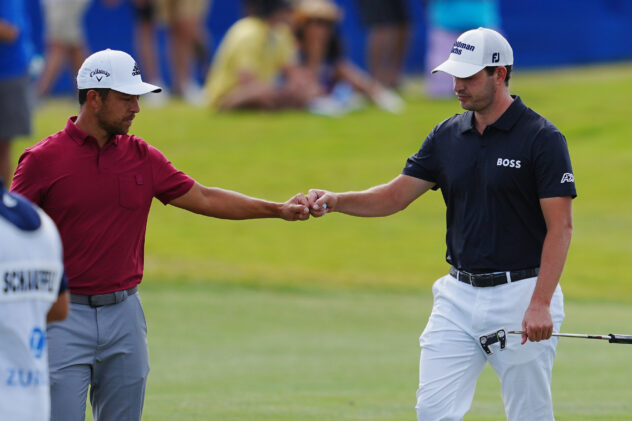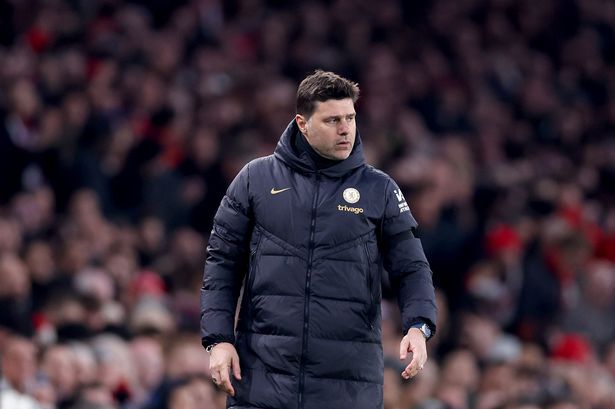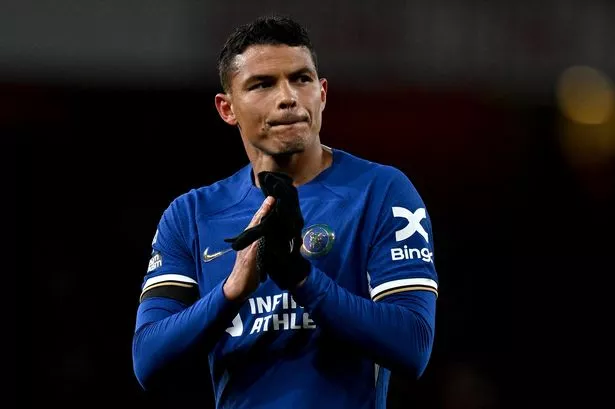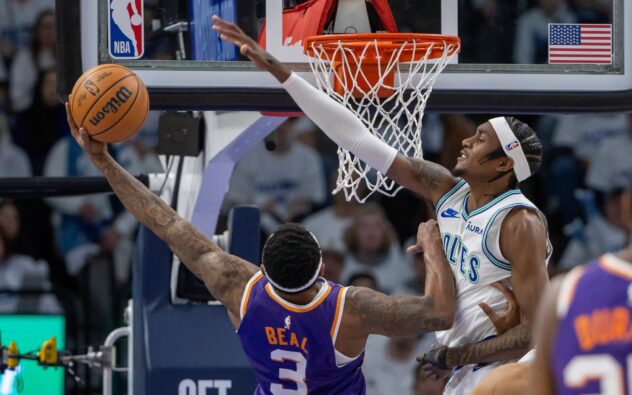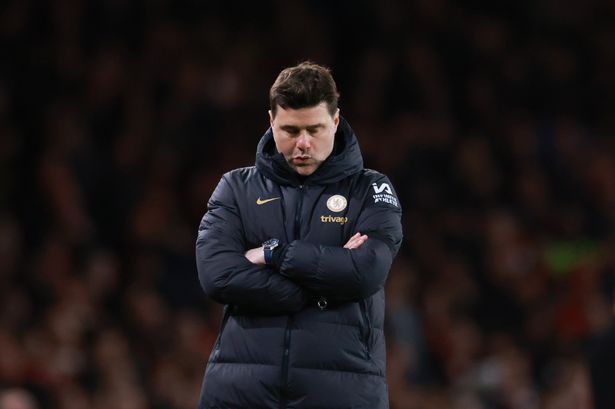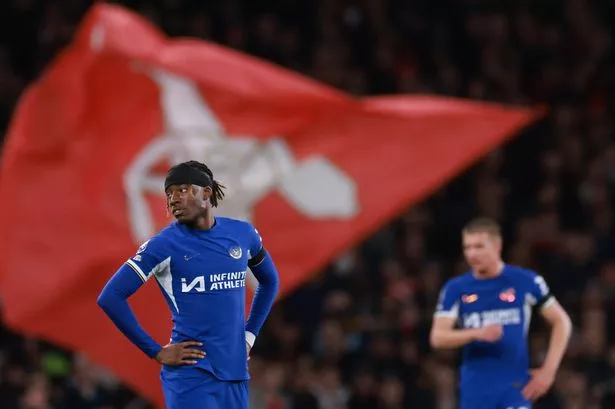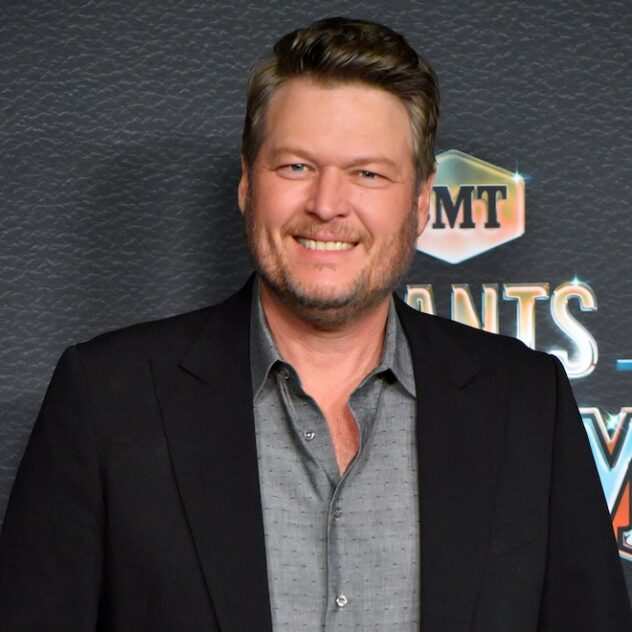What to make of the Spurs’ wilting three-point attack
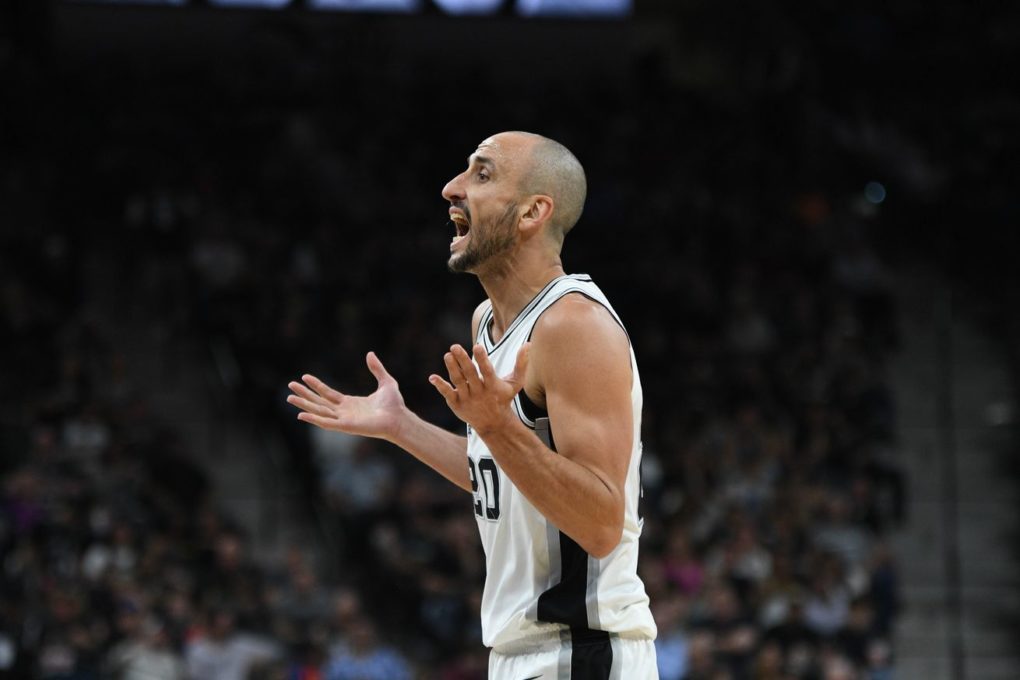
The team with the league’s best three-point shooting percentage last season now ranks in the bottom third. What’s going wrong?
In a result that could’ve been a major boon in their push for a playoff spot, the Spurs lost to the Warriors on Thursday night, 110-107. The loss was a greatest hits of this season’s narratives, especially as of late: fourth-quarter collapses, a lack of a second option on offense, and a heavy dose of Warriors fatalism.
With Kawhi Leonard appearing in just nine games, it’s hard to pin the team’s woes on anything but one faulty tendon. Still, an area that could’ve softened the blow of Leonard’s injury — and mitigated the issues listed above — is another fixture that’s been absent in 2017-18: three-point shooting. They made 6 of their 22 attempts on Thursday.
The Spurs have finished in the top seven in three-point shooting percentage every season since 2009-10, and one would’ve expected that to continue given the franchise’s unmistakable, if belated, embrace of small ball: almost every player on this roster can shoot, including its two high-usage big men. And yet their percentage currently ranks 21st in the league at 35.3%, the lowest it’s been since 2002-03. When you account for their number of attempts per game (24.4 this season), the 3.7% dip in three-point percentage equates to a significant 2.5 points per game that the Spurs have missed.
It’s important to note that, though they’ve been proficient from beyond the arc —excepting this season— the Spurs haven’t averaged a high volume of threes for a while. This year they’re 26th in the league in three-point rate, which is about where they’ve been since LaMarcus Aldridge joined. In the four or five seasons before that, they ranked in the middle of the pack and, in the peak Big Three era, they ranked in the top third of the league.
Heading into this season, the team wasn’t positioning itself to significantly up that volume. Here’s assistant coach Becky Hammon speaking on the subject after a preseason game in October:
“Hopefully we can get our attempts up and get our tempo up. It’s always a point of concern to us to play at a quicker pace. We’re going to take what they give us. Obviously attacking close-outs, that tends to create rotations and then you get open threes. We don’t want to just be shooting threes; we want to be shooting good-looking threes.”
The three-point rate has gone up — but just barely. Last season, it was .288, which is 28.1% of their field goals; this season, it’s at .288. And those looks haven’t been substantially worse compared to 2016-17, at least going by the numbers below (courtesy of NBA.com/stats) which look at how closely Spurs shooters have been guarded on threes. What has changed are the percentages (in parentheses).
2017-18:
Very tight: 0.4% of field-goal attempts (23.8 FG%)
Tight: 2.9% (30.9 FG%)
Open: 10.1% (33.1 FG%)
Wide open: 16.5% (38.3 FG%)
2016-17:
Very tight: 0.3% (36.4 FG%)
Tight: 2.8% (28.3 FG%)
Open: 10.9% (38.9 FG%)
Wide open: 15.3% (41.6 FG%)
A lack of clarity on a macro level for why the shots aren’t going down forces us to look at a number of smaller things that have contributed to the three-point shot’s disappearance. Here are a few of note.
Missing Kawhi hurts
Technically, Leonard’s 38% three-point shooting on over five attempts per game brought the team average down last season, but it doesn’t speak to the gravity and impact he had on basically every possession. To wit: look at the shot below, with Leonard mobbed by Jazz defenders and two teammates spotting up, which just so happened to result in a made three-point basket.
/cdn.vox-cdn.com/uploads/chorus_asset/file/10388517/kawhithree.png)
Leonard commanded plenty of defensive attention last season, and made big strides as the kind of facilitator the team needed that could pass out of those situations and create for teammates. His absence, like in most areas, is the starting point for the Spurs’ 2017-18 struggles.
But look at the team’s most-used non-Leonard lineups last year, and you see that the Spurs remained a solid three-point shooting team even without their star forward. Four of the top five most-used lineups shot above 42% from three, which makes it necessary to dig a little deeper.
More minutes for Dejounte
I’m as much a believer in Murray’s upside as anyone, but having a starting point guard that can’t make, and usually won’t take, open looks from beyond the arc hurts. That his lack of spacing comes with a still-budding ability to penetrate and find shooters is why with Murray on the floor, the Spurs shoot just 31.1% from three, compared to 39.7 when he’s off.
New roles for Gasol and Mills
Two of the guys that have been most impacted by Leonard’s injury were also their most important shooters last season. With a dearth of playmaking among the team’s healthy players, both Pau Gasol and Patty Mills have seen their roles shift.
Despite technically being Tony Parker’s backup, Mills has always been more of an undersized two than a true point guard, capable of doing more damage moving off ball than operating in the pick and roll or penetrating. But with Parker’s minutes diminished, Dejounte Murray not quite ready to take on a full point guard’s workload, and Leonard in street clothes, the Aussie has been forced to do more with the ball in his hands, splitting time between point-guard duties off the bench and, after the All-Star break, supporting Murray in the starting lineup. Mills is still shooting an above-average 37.8% from deep, but it’s a drop from the 41.4% he shot last season. It’s also symptomatic of the strains that Leonard’s injury has put on this roster as a whole.
The same goes for Gasol, whose renaissance as a true stretch five in the half-way point of last season was a revelation, as he led the Spurs and the entire league with an absurd 53.8% three-point shooting. He was a major beneficiary when defenses had to split their attention between Leonard and Aldridge, often appearing as the trailer on plays and feasting on open three-point looks from above the break.
Gasol has been doing a lot more damage lately as a trailer spotting up for three pic.twitter.com/fI1hUjemR9
— Bruno Passos (@bouncepassos) March 20, 2017
This year, he’s back to being more of a focal point offensively, with several sets like this relying on him as the axis instead of him waiting in the margins for a spot-up opportunity. The result has been an increase in assists from 2.3 per game to 3.4, but a drop in open looks for the NBA’s best marksman last season.
Spurs running a variation of their Defibrillator action here, except Parker cuts along his side instead of going around Gasol.
Results in Parker getting the ball back in motion and getting all the way to the basket for an easy one. pic.twitter.com/4F8Ck6wWEV
— Bruno Passos (@bouncepassos) February 10, 2018
Manu’s decline
Believe it or not, Manu Ginobili is aging — just not in the linear, across-the-board way that mere mortals do. He showed significant signs of it last year, namely in his percentages around the rim, but remained an effective player by shooting almost 40% from beyond the arc. This year, the narrative his flipped, with his three-point percentage dropping significantly and his shooting around the rim as good as it’s been in years. He took the fourth-most threes last year at a 39.2% clip. That’s down to just 32.7% of them while taking the fifth-most attempts.
The three-point shot has served as a bellwether for the team’s success. When hitting at or above their clip from last season — 39.1% — they’re 20-4. When they don’t, such as against the Warriors on Thursday, they’re 17-24. A bit of luck would surely help with the shots going down, but a quick look at the injury report reveals how much good fortune the team is experiencing this year.
Source: Pounding The Rock

